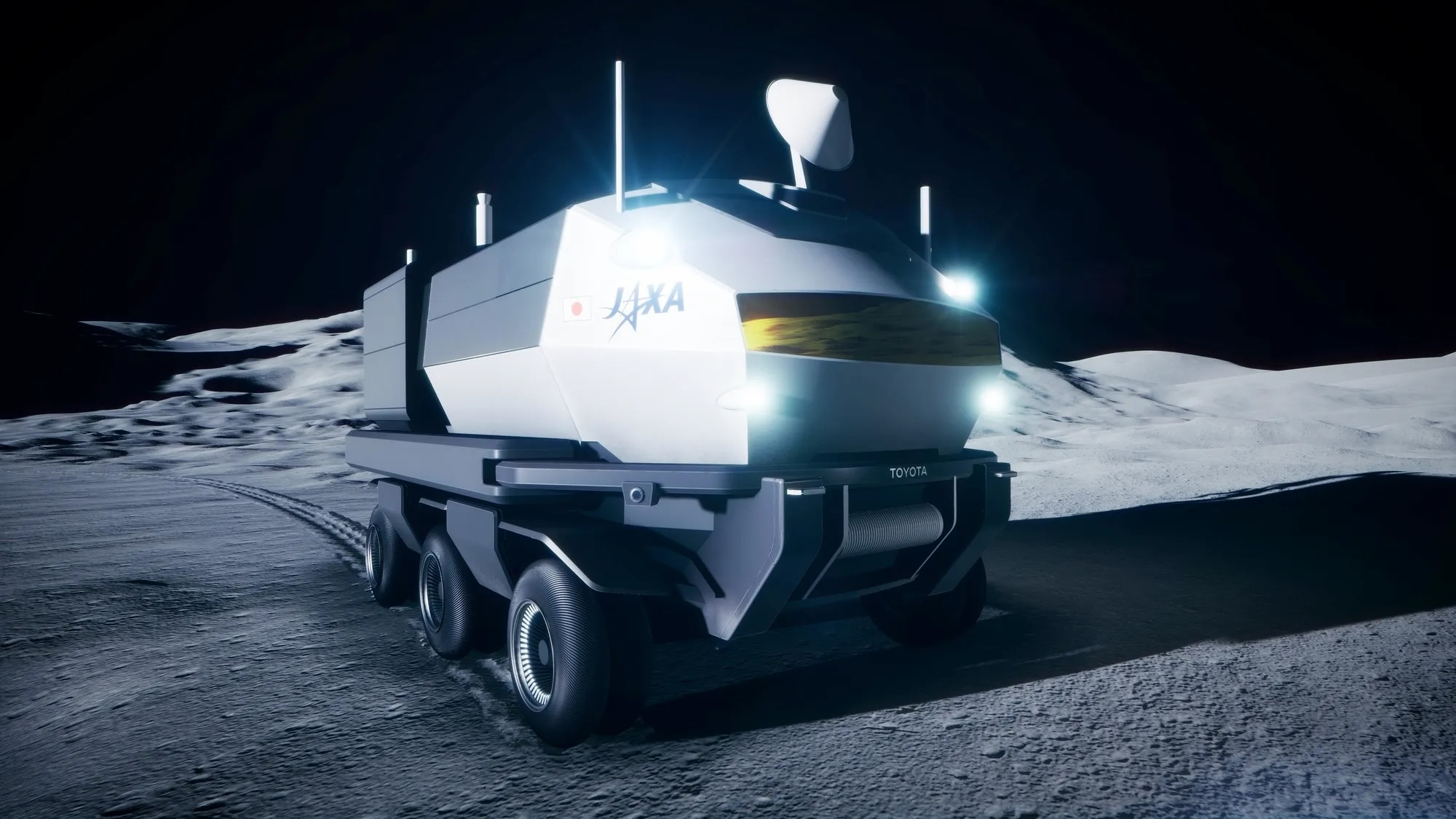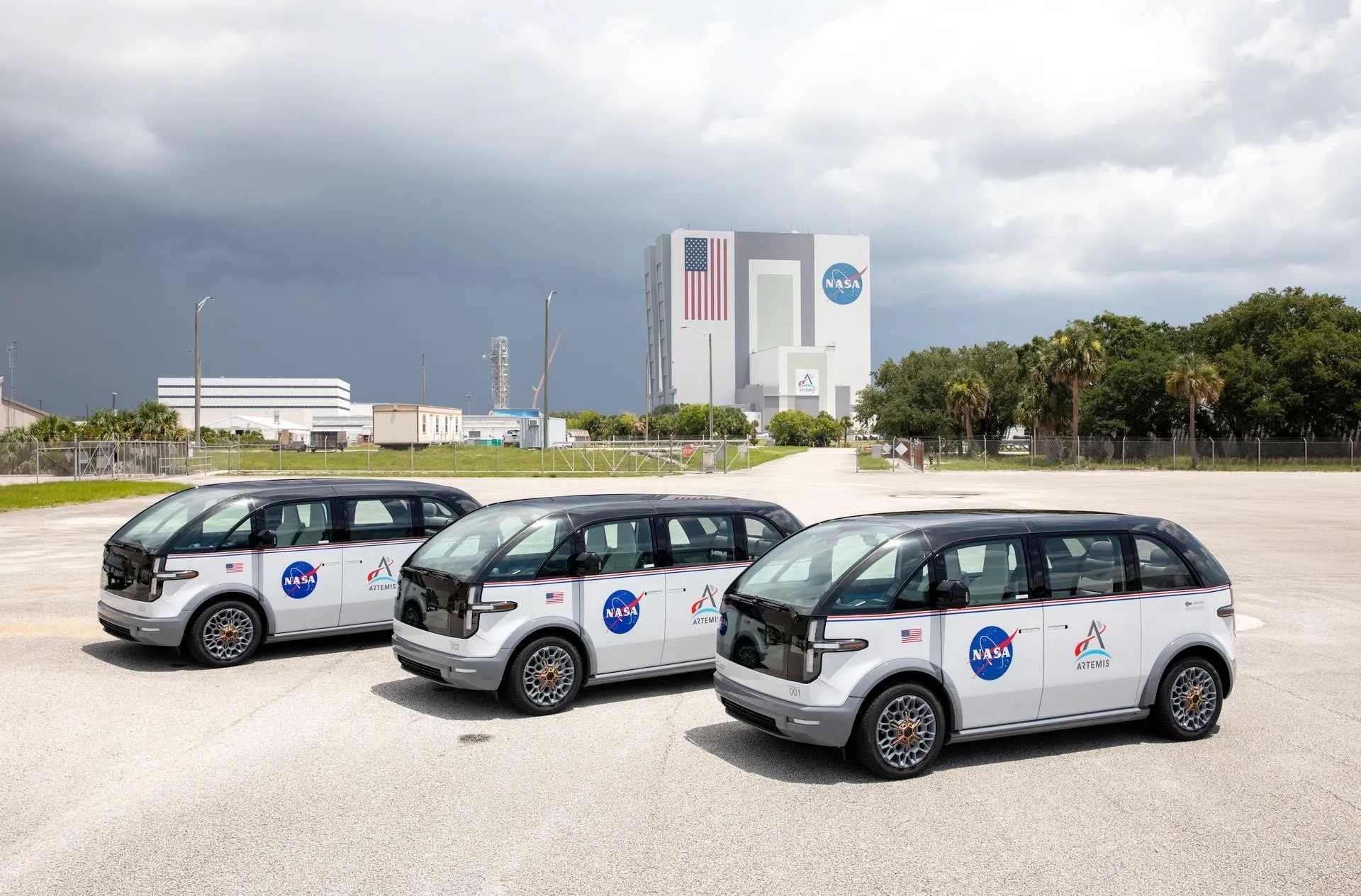11.02.2025

JAXA and Toyota are working on Lunar Cruiser, a pressurized rover intended for later Artemis missions on the moon. Credit: Toyota
WASHINGTON — A White House statement appeared to endorse NASA’s Artemis campaign of lunar exploration even as the space industry is preparing for significant changes to, or even cancellation of, elements of it.
The White House released Feb. 7 a joint statement linked to the visit of Japanese Prime Minister Ishiba Shigeru to Washington to meet with President Donald Trump, one that made a passing reference to the Artemis campaign of human lunar exploration.
“The United States and Japan intend to continue their strong partnership in civil space and on aeronautics, science, and human exploration, including on the upcoming Crew-10 mission to the International Space Station that includes U.S. and Japanese astronauts as well as lunar surface exploration on future Artemis missions,” the document stated.
The Crew-10 mission to the ISS, currently scheduled for launch no earlier than late March, will include astronaut Takuya Onishi from the Japanese space agency JAXA along with NASA astronauts Anne McClain and Nichole Ayers and Roscosmos cosmonaut Kirill Peskov. It is part of the series of routine crew rotation missions to the station.
More telling was the inclusion of the statement about Artemis, given widespread speculation that the new administration will propose major changes to the program or even cancel it entirely to focus NASA’s human spaceflight efforts on Mars. Elon Musk, the SpaceX chief executive and a close adviser to the president, has criticized the Artemis architecture and expressed his support for human Mars missions.
Making major changes to Artemis could upend international partnerships, including with Japan. JAXA is working with the European Space Agency on the Lunar I-Hab habitation module for the lunar Gateway along with other contributions that include logistics missions using a version of its HTV-X cargo vehicle.
NASA and JAXA also reached an agreement in April 2024 where JAXA will develop a pressurized lunar rover called Lunar Cruiser for use on later Artemis missions, enabling longer expeditions from Artemis landing sites. In return, NASA will deliver the rover on a cargo version of SpaceX’s Starship lunar lander and provide two seats on Artemis landing missions to JAXA astronauts, one of which would be as early as Artemis 4.
The joint statement came the same day as Boeing informed employees working on the Space Launch System program that up to 400 of them could be laid off in April. The company cited “revisions to the Artemis program and cost expectations” as reasons for the layoffs, with speculation that the administration will seek to cancel the launch vehicle.
One industry source, speaking on background, compared Artemis to Schrödinger’s Cat, the thought experiment from quantum mechanics used to describe superposition: simultaneously alive and dead as NASA continues work on its various programs amid the expectation that many elements of the effort will be altered or canceled by the new administration.
Members of Congress have said little about potential changes to Artemis, and the Senate Commerce Committee has yet to schedule a confirmation hearing for Jared Isaacman, the Trump administration’s nominee to be NASA administrator.
However, Rep. Brian Babin (R-Texas), chairman of the House Science Committee, signaled continued support for efforts to return humans to the moon during an organizational meeting for the committee Feb. 5.
“We will also advance legislation that supports the U.S. commercial space industry and keeps NASA on its mission to return Americans to the moon and establishes a pathway to Mars and beyond,” he said.
Quelle: SN
+++
NASA to continue using Artemis crew transport vans from bankrupt manufacturer

Canoo Technologies, which delivered three vans to NASA in 2023 for transporting astronauts to the launch pad for Artemis missions, filed for Chapter 7 bankruptcy in January. Credit: NASA/Isaac Watson
WASHINGTON — NASA expects to continue using electric vans it acquired to transport astronauts to the pad for Artemis missions even though the vehicles’ manufacturer has gone out of business.
NASA awarded a contract to Canoo Technologies in 2022 for three Artemis Crew Transportation Vehicles, vans that the agency plans to use to ferry astronauts to the launch pad for Artemis missions. The vans, with a value of nearly $150,000 under the contract, were delivered to NASA in July 2023.
Canoo, however, filed for Chapter 7 bankruptcy liquidation Jan. 17, citing the inability to secure capital from a Department of Energy loan program or other sources. The company said it would immediately cease operations while a court-appointed trustee managed the liquidation of the company’s assets.
Canoo had long touted the NASA contract, despite its small size, as evidence of interest in its electric vehicles. “We would also like to thank NASA, the Department of Defense, The United States Postal Service, the State of Oklahoma and Walmart for their belief in our products and our company. This means a lot to everyone in the company,” Tony Aquila, chairman and chief executive of Canoo, in a statement about its Chapter 7 filing.
The company had faced financial problems for some time. Shortly after winning the NASA contract for the vans in 2022, the company noted a “going concern” warning in regulatory filings because of continued losses that raised “substantial doubt” the company could continue operations for the next year. Executives said at the time they were working to raise additional capital.
The bankruptcy filing raised questions about the future use of the vans delivered to NASA. With the company out of business and only a small number of vehicles sold, the ability to maintain the vehicles appeared unclear.
NASA, for now, plans to continue using the vehicles. “Our vehicles are in working order for use during training activities and mission preparations,” a spokesperson for NASA Kennedy Space Center told SpaceNews. “NASA has worked with the manufacturer to train teams at Kennedy to operate and maintain many of the elements and the agency will review those plans as needed.”
The vehicles are part of the Exploration Ground Systems (EGS) program, which provides the infrastructure needed to support Artemis missions. Brad McCain, vice president and deputy program manager for the EGS program at Amentum, the lead contractor for EGS, said after a panel at the SpaceCom conference Jan. 29 that the program was in discussions with officials at Canoo on ways to continue support for the vans after the company’s bankruptcy.
The vans are presently only used by the Artemis program, which has yet to conduct a crewed launch. Boeing worked with Airstream to develop an “Astrovan II,” an updated version of the shuttle-era Astrovan, for its Starliner commercial crew missions. SpaceX uses vehicles from Tesla for transporting astronauts to the pad for Crew Dragon launches.
Quelle: SN
